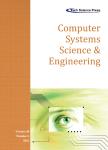Modelling a Learning-Based Dynamic Tree Routing Model for Wireless Mesh Access Networks
作者机构:Department of Computer Science and EngineeringSri Shakthi Institute of Engineering and TechnologyCoimbatoreIndia School of EngineeringPresidency UniversityBengaluruIndia Department of Information TechnologyBannari Amman Institute of TechnologySathyamangalamIndia
出 版 物:《Computer Systems Science & Engineering》 (计算机系统科学与工程(英文))
年 卷 期:2023年第44卷第2期
页 面:1531-1549页
核心收录:
学科分类:0809[工学-电子科学与技术(可授工学、理学学位)] 08[工学]
主 题:Wireless mesh access networks mobile ad-hoc network reinforcement learning multi-objective constraint asymmetric link
摘 要:Link asymmetry in wireless mesh access networks(WMAN)of Mobile ad-hoc Networks(MANETs)is due mesh routers’transmission *** is depicted as significant research challenges that pose during the design of network protocol in wireless *** on the extensive review,it is noted that the substantial link percentage is symmetric,i.e.,many links are *** is identified that the synchronous acknowledgement reliability is higher than the asynchronous ***,the process of establishing bidirectional link quality through asynchronous beacons underrates the link reliability of asym-metric *** paves the way to exploit an investigation on asymmetric links to enhance network functions through link ***,a novel Learning-based Dynamic Tree routing(LDTR)model is proposed to improve network performance and *** the evaluation of delay measures,asymmetric link,interference,probability of transmission failure is *** proportion of energy consumed is used for monitoring energy conditions based on the total energy *** learning model is a productive way for resolving the routing issues over the network model during *** asymmetric path is chosen to achieve exploitation and exploration *** learning-based Dynamic Tree routing model is utilized to resolve the multi-objective routing ***,the simulation is done with MATLAB 2020a simulation environment and path with energy-efficiency and lesser E2E delay is evaluated and compared with existing approaches like the Dyna-Q-network model(DQN),asymmetric MAC model(AMAC),and cooperative asymmetric MAC model(CAMAC)*** simulation outcomes demonstrate that the anticipated LDTR model attains superior network performance compared to *** average energy consump-tion is 250 J,packet energy consumption is 6.5 J,PRR is 50 bits/sec,95%PDR,average delay percentage is 20%.



